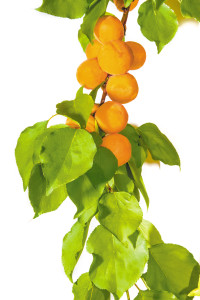Q. My wife planted a nameless Clematis last summer. It did really well going along a south facing fence but we don’t know what to do with it now. It’s a mass of brown leaves and tangled up tendrils. Should we cut it down really short and try to remove as many of those crunchy leaves and hope for the best next spring?
A. Clematis is pruned in March so right now I’d wait and do nothing. Clematis is pruned based on its blooming habit. There are varieties or types that bloom on the new growth, the old growth and some on both. So, being a nameless variety is a problem. I’m going to assume it was in bloom when you planted it. Summer flowering varieties bloom on the new growth in the spring. This group is the easiest to prune. I’d just cut the vegetation down to the ground and let the new growth generate from the base of the plant. With the spring blooming varieties they’re pruned after the flowers are spent because they’re blooming on last year’s old wood. The spent flowers are removed and you trim the growth back to twenty four inches. The balance of the growing season is spent generating new growth that will bloom the following year. If you prune too early, you effectively remove the flowering buds and have no flowers. Those varieties that bloom on both the new and old wood should be given a moderate trimming or shaping, so you don’t lose any promising buds for the summer flowering season. All dead wood should be removed regardless of variety and an annual feeding with a balanced fertilizer is recommended to encouraged the new growth. Once the rainy season has concluded you need to shade the roots from the hot afternoon sun by mulching. A three inch layer of organic matter will help retain moisture and insulate the roots. There is another issue that you need to keep in mind when pruning. A community fence is a poor structure for growing vines as it’s impossible to keep the vegetation confined to your side. So the annual pruning is a safe guard method of keeping the plant under control and avoiding a neighbor dispute.
Q. My Apricot and Plum trees suddenly stopped producing. The trees have been quite productive; however, they were a big disappointment last year. How do I correct things this year?
 A. Apricots and Plums produce fruit on the second year wood. If the trees are pruned too severely, the fruiting spurs are removed. This probably is the number one reason why deciduous fruit trees fail to set fruit. There are other reasons but they really don’t apply to your trees. Generally, you should remove fifteen to twenty-five percent of the growth each year. The fruiting spurs are easy to detect. Those branches with buds clustered in a grouping of three or more are the fruiting buds. These stems are a darker color than the one-year old growth, that is a much lighter color and has a single bud. The good news is the trees productivity will return once the pruning technique changes.
A. Apricots and Plums produce fruit on the second year wood. If the trees are pruned too severely, the fruiting spurs are removed. This probably is the number one reason why deciduous fruit trees fail to set fruit. There are other reasons but they really don’t apply to your trees. Generally, you should remove fifteen to twenty-five percent of the growth each year. The fruiting spurs are easy to detect. Those branches with buds clustered in a grouping of three or more are the fruiting buds. These stems are a darker color than the one-year old growth, that is a much lighter color and has a single bud. The good news is the trees productivity will return once the pruning technique changes.
Q. I have fifteen roses in raised containers that have sunk nearly a foot, so I need to add more soil. My thoughts are to prune the roses and then extract them from the boxes. I’m planning on keeping the bushes in water while adding fresh soil to the planters and then replanting them. Is this going to work?
A. This is a very workable solution. With fifteen roses to prune, move and then replant, you can take your time and spread it out over several weekends instead of completing it in one. It is not necessary to keep the roses in water for days on end. You could remove the bushes from the planters with soil on their roots or bare root them. The roses with a root ball intact can be grouped together, moistened and then loosely covered with a tarp, protected from the afternoon sun. The plants can even be stacked on top of one another. This would also work with another ornamental plants in containers. Another option is to bare root these plants by washing the soil off the roots. They are then laid vertically on a flat surface, which could be on dirt or even concrete. Next cover the roots with moistened potting soil and a tarp. Again they can be stacked in a pile. If the bushes are under an overhang, the tarp isn’t necessary. A second option would be to group the bare root roses into several empty containers and temporarily fill them with soil. Roses can be transplanted anytime though February. Also, It’s not necessary to replenish every bit of soil. Roses can be stored in this fashion for four to six weeks. These options give you the flexibility to proceed at a leisurely pace and deal with any weather delays.








